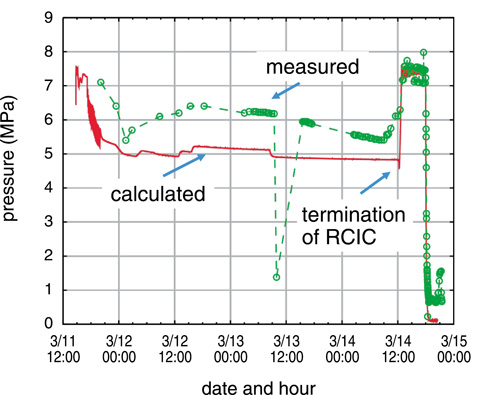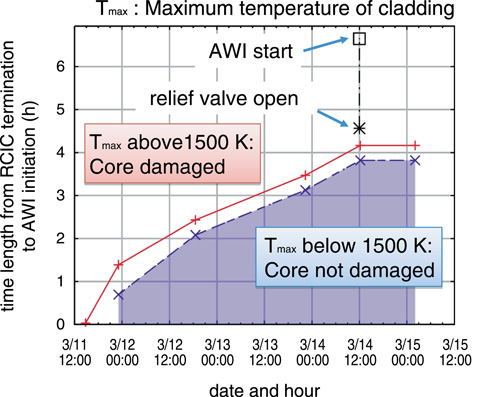
Fig.1-41 History of the primary pressure after the earthquake

Fig.1-42 Time margin for beginning alternative water injection to avoid core damage
A long-term station blackout (SBO) accident occurred at the TEPCO’s Fukushima Daiichi NPS (1F) following the Great East Japan Earthquake and resulted in severe core damage in Units 1~3 owing to loss of adequate core cooling. We simulated the accident in Unit 2 (1F2), in which core damage occurred last among the three units, using the thermal-hydraulic best estimate code TRAC-BF1, which analyzes coolant behavior and core cooling. An input model that had been used for the analysis of a BWR with an electric power of 1100 MW was adapted for the analysis of 1F2 with an electric power of 780 MW in order to rapidly initiate the analysis. The reactor core of 1F2 was long cooled using continuous water injection from the Reactor Core Isolation Cooling (RCIC) system while the SBO condition persisted. Therefore, we studied the reactor response to the RCIC water injection, its termination, and alternative water injection (AWI) using a fire engine in the accident analysis
Fig.1-41 compares the measured and calculated primary pressure in 1F2 from the reactor scram to the start of AWI. After the reactor scram, the pressure decreased significantly once and a rather mild response followed. The pressure then increased drastically after termination of RCIC on March 14 and stayed high until the system depressurized through use of a relief valve. The TRAC code underestimated the initial pressure response but provided a good simulation of the following transient, particularly of the pressure after termination of RCIC water injection. This result suggests that the code can properly simulate the 1F2 accident.
The code analysis results obtained by changing the timing of RCIC termination and AWI initiation are summarized in Fig.1-42 for discussion of the efficiency of AWI. Core damage occurs when the cladding temperature of the fuel rods exceeds 1500 K. Fig.1-42 indicates that core damage can be avoided within the blue region, where the maximum cladding temperature is lower than 1500 K. Core damage may occur in the region above the red line. While the initiation of AWI using a fire engine on March 14 was too late for 1F2, this diagram suggests that core damage could have been avoided if the AWI was begun approximately 4 h earlier. These results should contribute to the improved evaluation of accident management measures.